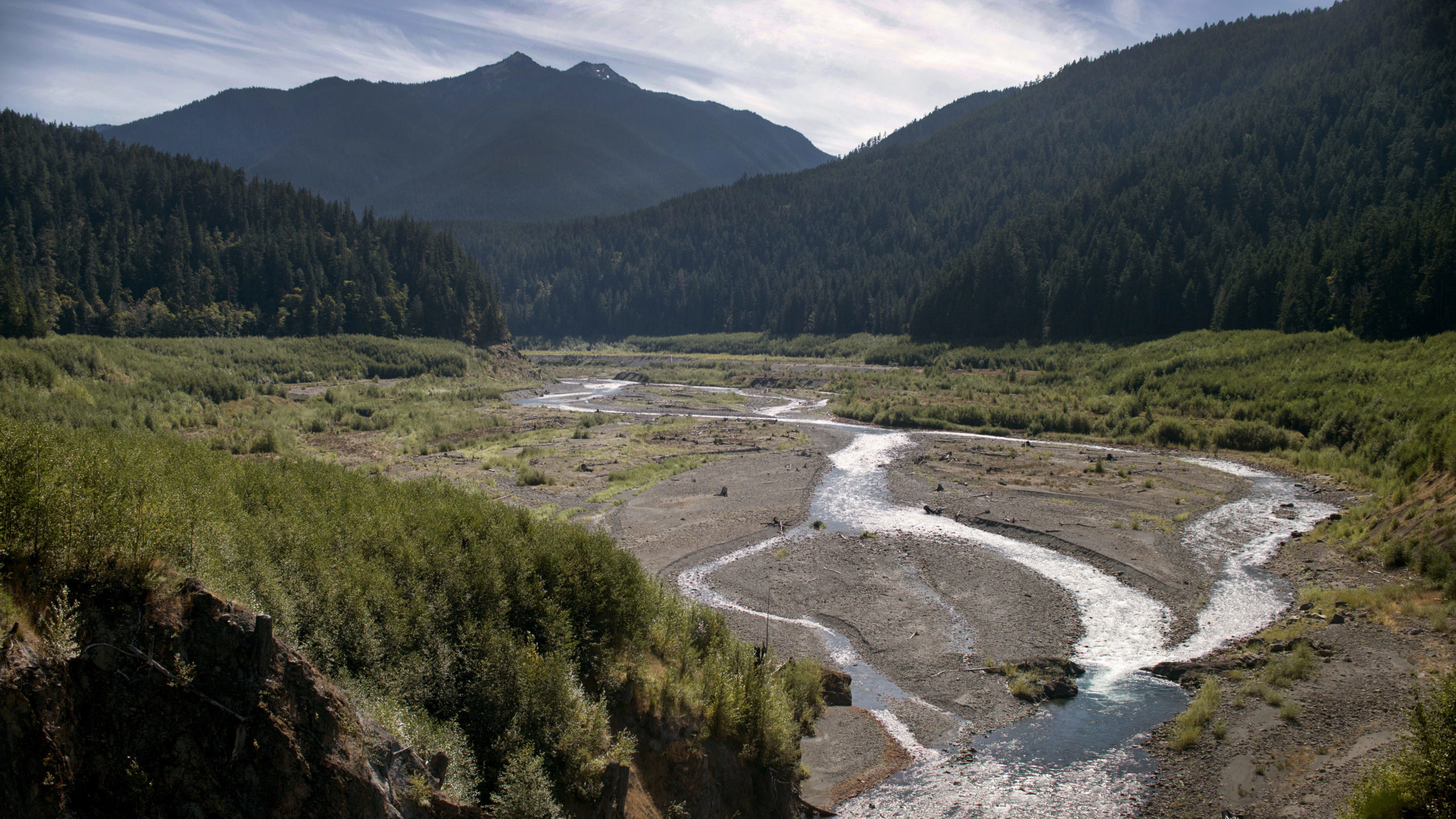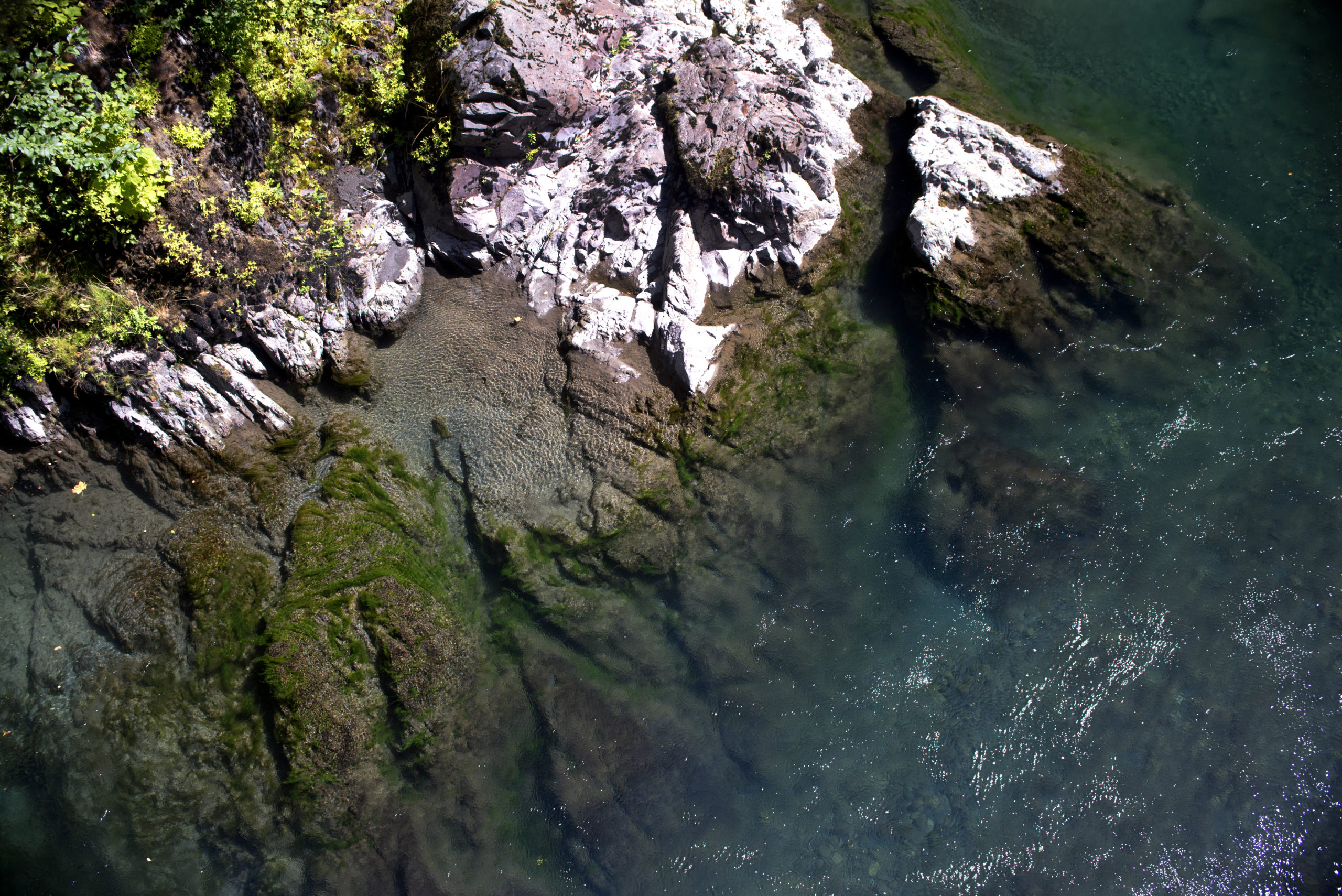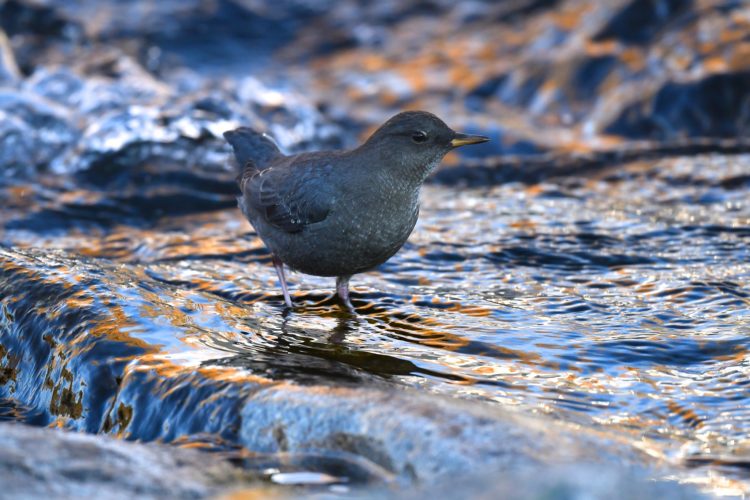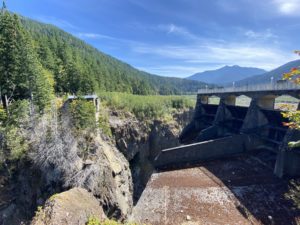We have much more to do and your continued support is needed now more than ever.
The Elwha: A Roadmap for River Restoration Across the Northwest Region

The Elwha. The story of the majestic river that bears this name, located on the northern tip of Washington’s Olympic National Park, is one that is all too common today. The only river on the Olympic Peninsula with all five species of Pacific salmon, the Elwha once teemed with an estimated 400,000 fish each year. Unfortunately, like so many western rivers, it succumbed to the pressures of rapid regional development and the burgeoning timber industry in the early 1900s. A timber company constructed the Glines Canyon and Elwha dams to provide energy for their mills in Port Angeles, WA. This action permanently blocked steelhead behind a cement wall and limited salmon access to a mere 5 miles of spawning habitat–resulting in the imminent extinction of the awe-inspiring, hefty Elwha chinook (which could weigh up to 100 pounds).
In a story that echoes the decline of other legendary western salmon fisheries over the last century, every species of migrating fish in the river immediately began to plummet toward extinction. Dramatic and rapid decreases in salmon not only devastated the overall health of the watershed but the longstanding traditions of Native American tribes in the area as well.
The Lower Elwha Klallam Tribe, the largest on the Olympic Peninsula, has relied on this river for tens of thousands of years as a source of nutrition, livelihood, and trade. Even more important: Salmon form the foundation of many of their cultural beliefs. The “Elwha people,” as the Tribe is known, never approved of the construction of the dams and have been leading the effort to remove them and restore this watershed for ages.
In 2014, everything changed when growing pressure led to the removal of two dams.
Freed from the constraints of two giant cement walls, the Elwha River and its migrating fish have run free in its entirety, flowing 45 miles from its source high in the Olympic Mountains all the way to the Pacific Ocean.
Ten years after I first learned of this river, I finally had the opportunity to take a walk along three miles of its recently-restored banks to the Glines Canyon Overlook. It used to be accessible by car, providing National Park visitors an awe-inspiring glimpse of humanity’s ability to control mighty rivers behind massive dam walls. Now, visitors overlook the remains of Glines Canyon Dam, surrounded by educational signs about the significance of its removal — a signal of how our societal relationship with rivers is changing.

These dams stood for a century, but by removing them, the region collectively decided to write a new story for their river. Instead of accepting the tremendous loss of a healthy ecosystem and the benefits it provides, the community chose to rewrite the story of the river and to invest in resilience. Not only did salmon and steelhead quickly rebound from perilous lows, but the entire web of life surrounding the river also rebounded. America’s only aquatic songbird, the American dipper, has returned to the area in record numbers. A rush of new sediment expanded estuary habitat along the coast: Shorebirds, crabs, clams, oysters, and insects are thriving. In the floodplain, alder, cottonwood, maple, and willows have moved back, taking advantage of the rich, restored riverside habitat.

Standing at the overlook for the world’s largest river restoration project to date, I was surprised to see huge sections of the dam still standing, shocked by its sheer immensity. While I could toss a ball across the narrow canyon, looking down at where the dam wall used to be made my stomach curl — a whopping 210 feet to the rapids that had reemerged below. Yet, I can’t help but be inspired by the people who dedicated their lives to restoring this river – never once doubting that it could be healed.

As a Southwesterner with a parched heart, I know the vital importance of healthy rivers and the lush life they support. I know that the Elwha’s story of restoration and resilience doesn’t have to be unique — we can use it as a road map to protect other rivers teetering on the brink.
Much like the Elwha, we need to examine the story of the lower Snake River and act quickly. Fifty years ago, the U.S. government built four dams along the lower Snake River in eastern Washington to connect the small town of Lewiston, Idaho to the Pacific Ocean via barge. Similar to the Elwha, salmon and steelhead returns immediately began to plummet toward extinction and in 1993, thirteen different runs were listed as endangered.
Just like the Elwha, regional tribes have been fighting to free the lower Snake River and hold the government accountable for their promise of providing abundant harvestable salmon runs for decades. Conservation organizations and the fishing community have also been vocal advocates for restoring a free-flowing Snake. Unfortunately, just as concerns about water quality and flood control drove opposition to restore the Elwha, concerns about energy production, transportation, and impacts to farmers have introduced formidable barriers to restoring the lower Snake River.
The Elwha illuminates that these challenges can be overcome, that we can shift the story. The future can be prosperous for both people and wildlife if we act intentionally and with urgency. Just as tribes, community members, municipalities, and agencies came together to find innovative solutions to address the varied and valid concerns about removing the Elwha dams, we can find comprehensive solutions on the lower Snake. We can develop innovative energy systems using wind and solar, systems that will provide more energy than the lower Snake River dams generate. We can invest in rail and road improvements to allow farmers to access markets without using barges. We can negotiate ways to ensure that river users are not impacted by dam removal. It is all possible if we work together.
Unlikely partners continue to express interest in finding a common ground solution, but only Congress will be able to determine the fate of lower Snake River salmon. In 1992, Congress signed “The Elwha River Ecosystem and Fisheries Restoration Act,” giving the Department of Interior green light to restore the Elwha River and its native anadromous fisheries. We need our regional congressional delegates to pave the way for similar legislation — authorizing a comprehensive package of projects that restores a lower Snake River that works for fish, farmers, and fishing communities.
The time has come to write a new story for the lower Snake River. Instead of a story of loss, we can write a story of community collaboration for restoration and recovery. We can write stories of resilience for our rivers: resilient fish, watersheds, and communities. We can write a story about how we found solutions to hard problems and saved ourselves along the way.
The Elwha provides the roadmap — let’s put it to work and let it guide us.
Restoring the lower Snake River is important for wild salmon’s survival. Act now to save our wild salmon. Take Action!
Betsy Emery is the Advocacy and Campaign Manager at National Wildlife Federation’s Oregon affiliate: Association of Northwest Steelheaders





















